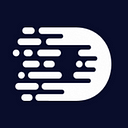What is NFT 2.0?

The time has come for NFT 2.0. Those who have not figured out NFT 1.0 yet may say that NFT 2.0 appeared too quickly, but non-fungible tokens can really surprise you. If 2021 was a turning point for NFT, then 2022 and the following years will be its technological leap forward.
Let’s start with the basics. NFT is a non-fungible token. Each of the NFTs are unique and exist in a single instance. It cannot be separated. All information about its author, buyer and all the transactions are securely stored in the blockchain. In other words, an NFT is a digital certificate attached to a unique object.
But there is an elephant in the room: NFTs are difficult to use and a majority of them are digital snake oil. But these problems create the opportunity to provide answers. The accessibility and legitimacy of NFTs are both ripe for change. As funding pours into the space, the market is starting to mature, and that change is gaining momentum.
We’re entering a new era of NFTs — NFT 2.0 — where the technology will be more easily accessible by the mainstream, and the underlying value proposition of the NFTs will be more transparent and reliable.
What changed from NFT 1.0 to NFT 2.0?
NFT 2.0 can do everything that NFT 1.0 cannot. Here are the characteristics of NFT 2.0 that make it even more unique:
NFT Interlinking: This feature introduces layers to the concept of ownership. This means that an NFT can be linked to other NFTs, hold ‘fungible’ tokens, and even be associated with multiple data sets.
Upgradability: This capability allows NFTs to be modified in the future by adding metadata (data about the underlying asset), upgrading the artwork it is associated with, etc.
Dynamism: This feature makes NFTs more powerful by equipping them to give commands and execute modifications to other NFTs associated with it. It can even tweak the look of the connected NFTs. The capabilities of an NFT depend on the developer of the project.
How do these features make NFT 2.0 better?
Customised NFTs: NFT 1.0 only associated a single resource to the token. This means the token could only be associated with one format. No matter where the NFT is being viewed, it will appear the same to everyone. NFT 2.0 allows each token to be linked with multiple designs. Let us understand with an example.
Smart NFTs: Unlike NFT 1.0, the upgraded version allows smart contracts to become linked with NFTs. Thus, when the NFT changes ownership, the smart contract will automatically modify the ownership data on the token and record it on the respective blockchain. Moreover, the smart contract ensures that the creator of the NFT gets a royalty every time the asset changes hands.
Co-owned NFTs: NFT 1.0 allowed assets to be owned by a singular entity. However, with NFT 2.0, multiple owners can pitch in and own a stake in the NFT. This allows aspiring owners with a fund deficit to take part-ownership of the underlying asset. Having multiple owners also garners better trust in the asset as well as its ownership.
These added features and functionalities make NFTs smarter, more reactive, and adaptive. With smart contracts, the human intervention behind the buying and selling significantly drops, thus adding to the decentralised nature of the blockchain ecosystem powering the NFT marketplaces. The upgradability also means that NFT storage could change in the near future.
